-
 Bitcoin
Bitcoin $108,489.6704
1.13% -
 Ethereum
Ethereum $2,502.0528
2.92% -
 Tether USDt
Tether USDt $1.0002
0.00% -
 XRP
XRP $2.1941
0.51% -
 BNB
BNB $655.3375
1.00% -
 Solana
Solana $151.5977
1.27% -
 USDC
USDC $0.9999
0.00% -
 TRON
TRON $0.2768
0.32% -
 Dogecoin
Dogecoin $0.1676
2.86% -
 Cardano
Cardano $0.5675
0.98% -
 Hyperliquid
Hyperliquid $40.6109
7.48% -
 Bitcoin Cash
Bitcoin Cash $500.7746
2.09% -
 Sui
Sui $2.8328
2.03% -
 Chainlink
Chainlink $13.4452
1.26% -
 UNUS SED LEO
UNUS SED LEO $9.1623
0.39% -
 Avalanche
Avalanche $18.2267
2.24% -
 Stellar
Stellar $0.2382
0.00% -
 Toncoin
Toncoin $2.8885
1.68% -
 Shiba Inu
Shiba Inu $0.0...01159
0.91% -
 Litecoin
Litecoin $87.1827
0.88% -
 Hedera
Hedera $0.1511
2.90% -
 Monero
Monero $315.4992
-0.59% -
 Polkadot
Polkadot $3.4663
2.34% -
 Bitget Token
Bitget Token $4.6118
-0.65% -
 Dai
Dai $1.0000
-0.01% -
 Ethena USDe
Ethena USDe $1.0003
0.02% -
 Uniswap
Uniswap $7.2989
4.69% -
 Pepe
Pepe $0.0...01003
5.73% -
 Aave
Aave $275.5616
7.15% -
 Pi
Pi $0.5181
-2.49%
How does a decentralized network work? How do nodes reach consensus to ensure security?
Decentralized networks enable secure, transparent crypto transactions without a central authority; nodes reach consensus via mechanisms like PoW, PoS, and DPoS to maintain integrity.
May 06, 2025 at 08:43 pm

Decentralized networks form the backbone of many cryptocurrency systems, enabling secure, transparent, and direct transactions without the need for a central authority. Understanding how these networks operate and how nodes within them reach consensus is crucial for anyone interested in the world of cryptocurrencies.
What is a Decentralized Network?
A decentralized network is a type of network where control and decision-making are distributed among its participants, rather than being centralized in a single entity. In the context of cryptocurrencies, this means that instead of a central bank or authority managing transactions, a network of nodes (computers) collectively maintains the integrity and security of the system.
In a decentralized network, each node holds a copy of the entire blockchain—a digital ledger of all transactions that have ever occurred on the network. This redundancy ensures that the network remains operational even if some nodes fail or are compromised. The nodes communicate with each other to validate and record new transactions, ensuring that all participants have the same version of the ledger.
How Do Nodes Communicate?
Nodes in a decentralized network communicate through a peer-to-peer (P2P) protocol. When a new transaction is initiated, it is broadcast to the network. Each node verifies the transaction against a set of predefined rules to ensure its validity. If the transaction is valid, it is added to a pool of unconfirmed transactions, known as the mempool.
From the mempool, transactions are selected and grouped into blocks. Each block contains a list of transactions and a reference to the previous block, forming a chain of blocks, hence the term blockchain. Once a block is created, it is broadcast to the network, and each node verifies the block and its transactions. If a majority of nodes agree that the block is valid, it is added to the blockchain.
Consensus Mechanisms: Ensuring Security and Integrity
For a decentralized network to function effectively, the nodes must reach consensus on the state of the blockchain. Consensus mechanisms are the protocols used to achieve agreement among nodes, ensuring that all participants have the same version of the ledger and that transactions are valid and secure.
There are several types of consensus mechanisms, each with its own approach to achieving agreement. The most common ones in the cryptocurrency world are Proof of Work (PoW), Proof of Stake (PoS), and Delegated Proof of Stake (DPoS).
Proof of Work (PoW)
Proof of Work is the consensus mechanism used by Bitcoin and many other cryptocurrencies. In PoW, nodes (known as miners) compete to solve a complex mathematical puzzle. The first miner to solve the puzzle gets the right to add a new block to the blockchain and is rewarded with newly minted cryptocurrency.
The difficulty of the puzzle is adjusted so that a new block is added approximately every 10 minutes. This process ensures that the network remains secure, as altering a block would require re-mining all subsequent blocks, which is computationally infeasible.
Proof of Stake (PoS)
Proof of Stake is an alternative consensus mechanism that selects validators based on the number of coins they hold and are willing to "stake" as collateral. In PoS, validators are chosen to create new blocks based on their stake, rather than their computational power.
PoS is considered more energy-efficient than PoW, as it does not require the intensive computational work of mining. However, it introduces new challenges, such as the "nothing at stake" problem, where validators might support multiple blockchain versions to maximize their rewards.
Delegated Proof of Stake (DPoS)
Delegated Proof of Stake is a variation of PoS where stakeholders vote for a small number of delegates to validate transactions and create new blocks. These delegates are typically chosen based on their reputation and technical expertise.
DPoS aims to increase the efficiency and scalability of the network by reducing the number of nodes required to achieve consensus. However, it introduces a degree of centralization, as the power to validate transactions is concentrated in the hands of a few delegates.
How Consensus Ensures Security
Consensus mechanisms are crucial for ensuring the security and integrity of a decentralized network. By requiring a majority of nodes to agree on the state of the blockchain, consensus prevents malicious actors from altering the ledger.
In PoW, the high computational cost of mining makes it economically unfeasible for an attacker to control a majority of the network's mining power, a scenario known as a 51% attack. In PoS and DPoS, the requirement for validators to stake their coins as collateral acts as a deterrent against malicious behavior, as validators risk losing their stake if they act dishonestly.
The Role of Cryptography
Cryptography plays a vital role in the security of decentralized networks. Transactions are signed with the sender's private key, ensuring that only the owner of the corresponding public key can spend the funds. Additionally, cryptographic hash functions are used to link blocks together, making it nearly impossible to alter a block without re-mining all subsequent blocks.
Network Synchronization and Forks
Maintaining synchronization across a decentralized network can be challenging, especially when nodes are geographically dispersed. Network latency and block propagation time can lead to temporary disagreements about the state of the blockchain, resulting in forks.
A fork occurs when two or more nodes create different versions of the blockchain. In most cases, these forks are resolved quickly, as the network reaches consensus on which version is valid. However, in some instances, forks can lead to the creation of new cryptocurrencies, as was the case with Bitcoin Cash, which forked from Bitcoin in 2017.
Frequently Asked Questions
Q: How does a decentralized network handle scalability issues?
A: Scalability in decentralized networks is often addressed through techniques such as sharding, where the network is divided into smaller, more manageable pieces, and layer 2 solutions like the Lightning Network, which enable off-chain transactions to reduce the load on the main blockchain.
Q: Can a decentralized network be completely anonymous?
A: While decentralized networks can offer a degree of anonymity, complete anonymity is challenging to achieve. Techniques like mixing services and zero-knowledge proofs can enhance privacy, but some level of traceability often remains due to the public nature of the blockchain.
Q: What happens if a node in a decentralized network goes offline?
A: If a node goes offline, the network continues to function as long as a majority of nodes remain online. The decentralized nature of the network ensures that no single node is critical to its operation, and the blockchain remains intact even if some nodes are temporarily unavailable.
Q: How do decentralized networks handle disputes and fraud?
A: Decentralized networks rely on consensus mechanisms to prevent fraud and resolve disputes. If a fraudulent transaction is detected, nodes will reject it, and it will not be added to the blockchain. In cases of disputes, mechanisms like smart contracts can be used to enforce agreements automatically, reducing the need for intermediaries.
Disclaimer:info@kdj.com
The information provided is not trading advice. kdj.com does not assume any responsibility for any investments made based on the information provided in this article. Cryptocurrencies are highly volatile and it is highly recommended that you invest with caution after thorough research!
If you believe that the content used on this website infringes your copyright, please contact us immediately (info@kdj.com) and we will delete it promptly.
- Ripple, Stablecoin, Adoption: RLUSD Leading the Charge
- 2025-06-30 14:30:12
- Bitcoin ETF, IBIT, and the Bull Flag: Is $144,000 on the Horizon?
- 2025-06-30 14:50:12
- Bitcoin, Passive Income, and a Bull Raise: Riding the Crypto Wave
- 2025-06-30 14:30:12
- Bitcoin, Personal Loans, and Omega 88: A New Era in Lending?
- 2025-06-30 15:09:14
- Saylor's Strategy: How MicroStrategy's Bitcoin Bet is Reshaping Finance
- 2025-06-30 14:52:14
- Metaplanet's Bitcoin Blitz: From Zero to Hero in the Corporate Treasury Race
- 2025-06-30 15:10:54
Related knowledge
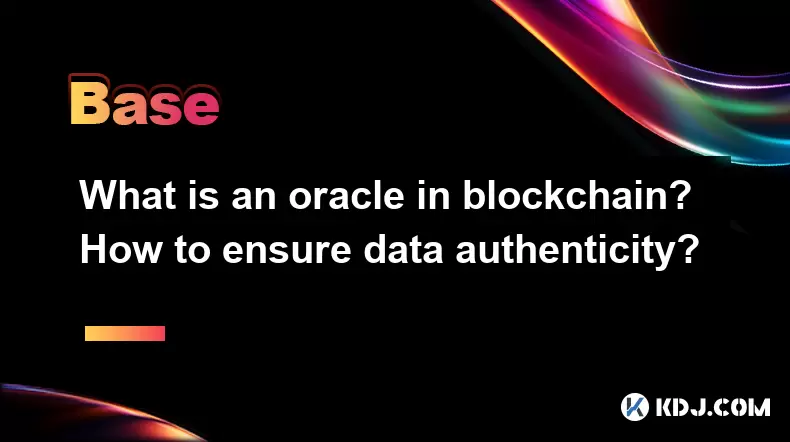
What is an oracle in blockchain? How to ensure data authenticity?
Jun 19,2025 at 08:49pm
Understanding the Role of an Oracle in BlockchainIn the context of blockchain technology, an oracle serves as a bridge between the blockchain and external data sources. While blockchains are inherently secure and decentralized, they cannot access real-world information on their own. Oracles enable smart contracts to interact with off-chain data such as ...
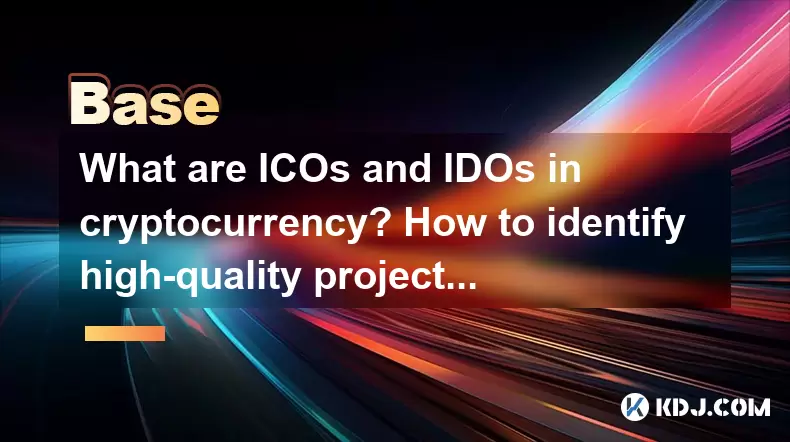
What are ICOs and IDOs in cryptocurrency? How to identify high-quality projects?
Jun 22,2025 at 11:49am
Understanding ICOs in CryptocurrencyInitial Coin Offerings (ICOs) are fundraising mechanisms used by cryptocurrency startups to raise capital for their projects. In an ICO, a company creates and sells its own tokens to investors in exchange for established cryptocurrencies like Bitcoin or Ethereum. The process typically involves the release of a whitepa...
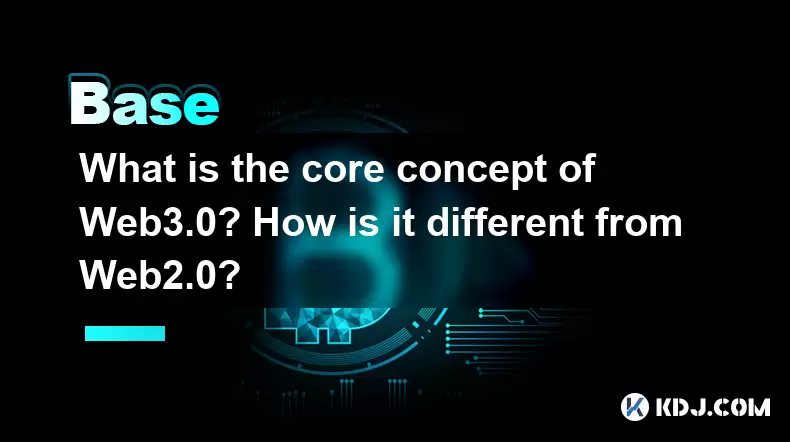
What is the core concept of Web3.0? How is it different from Web2.0?
Jun 21,2025 at 05:56pm
Decentralization as the Foundation of Web3.0The core concept of Web3.0 revolves around decentralization, which fundamentally challenges the centralized architecture of Web2.0. In Web3.0, control and ownership are distributed across a network rather than being held by a central authority or corporation. This is achieved primarily through blockchain techn...
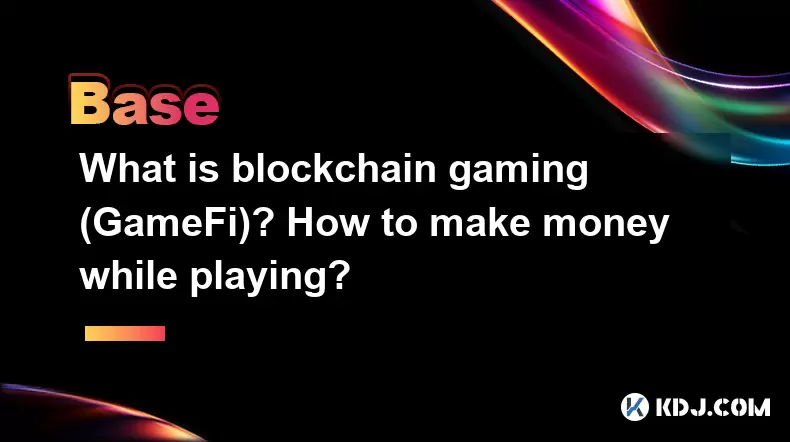
What is blockchain gaming (GameFi)? How to make money while playing?
Jun 20,2025 at 07:56am
Understanding Blockchain Gaming (GameFi)Blockchain gaming, often referred to as GameFi, is a fusion of blockchain technology and video games. It enables players to own in-game assets through non-fungible tokens (NFTs) and earn rewards via cryptocurrencies or token-based systems. Unlike traditional games where items are controlled by centralized develope...
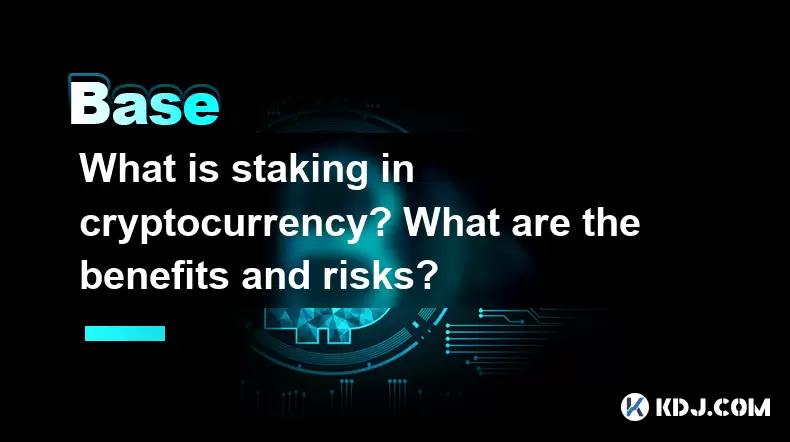
What is staking in cryptocurrency? What are the benefits and risks?
Jun 22,2025 at 10:01am
Understanding the Concept of Staking in CryptocurrencyStaking in cryptocurrency refers to the process of actively participating in transaction validation on a blockchain network that uses a Proof-of-Stake (PoS) consensus mechanism. Instead of miners competing to solve complex mathematical puzzles as in Proof-of-Work systems like Bitcoin, PoS blockchains...
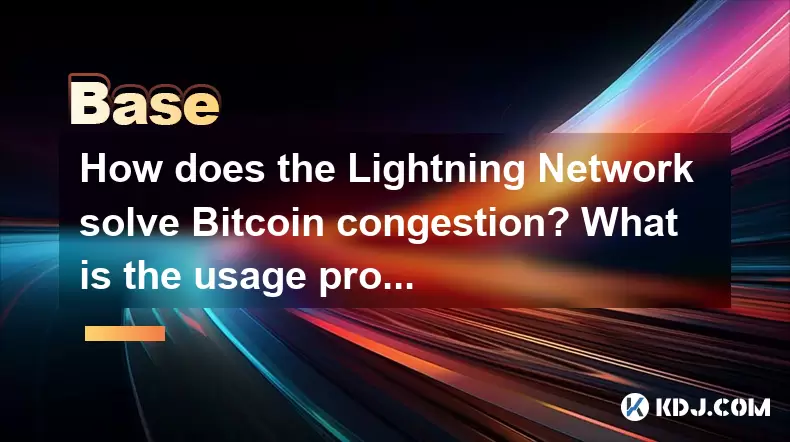
How does the Lightning Network solve Bitcoin congestion? What is the usage process?
Jun 23,2025 at 06:21pm
Understanding Bitcoin Network CongestionBitcoin, as a decentralized digital currency, operates on a blockchain that records every transaction in a public ledger. Each block has a limited size, typically 1 megabyte, which allows for only a certain number of transactions per second (TPS). When the number of transactions increases, the network becomes cong...

What is an oracle in blockchain? How to ensure data authenticity?
Jun 19,2025 at 08:49pm
Understanding the Role of an Oracle in BlockchainIn the context of blockchain technology, an oracle serves as a bridge between the blockchain and external data sources. While blockchains are inherently secure and decentralized, they cannot access real-world information on their own. Oracles enable smart contracts to interact with off-chain data such as ...

What are ICOs and IDOs in cryptocurrency? How to identify high-quality projects?
Jun 22,2025 at 11:49am
Understanding ICOs in CryptocurrencyInitial Coin Offerings (ICOs) are fundraising mechanisms used by cryptocurrency startups to raise capital for their projects. In an ICO, a company creates and sells its own tokens to investors in exchange for established cryptocurrencies like Bitcoin or Ethereum. The process typically involves the release of a whitepa...

What is the core concept of Web3.0? How is it different from Web2.0?
Jun 21,2025 at 05:56pm
Decentralization as the Foundation of Web3.0The core concept of Web3.0 revolves around decentralization, which fundamentally challenges the centralized architecture of Web2.0. In Web3.0, control and ownership are distributed across a network rather than being held by a central authority or corporation. This is achieved primarily through blockchain techn...

What is blockchain gaming (GameFi)? How to make money while playing?
Jun 20,2025 at 07:56am
Understanding Blockchain Gaming (GameFi)Blockchain gaming, often referred to as GameFi, is a fusion of blockchain technology and video games. It enables players to own in-game assets through non-fungible tokens (NFTs) and earn rewards via cryptocurrencies or token-based systems. Unlike traditional games where items are controlled by centralized develope...

What is staking in cryptocurrency? What are the benefits and risks?
Jun 22,2025 at 10:01am
Understanding the Concept of Staking in CryptocurrencyStaking in cryptocurrency refers to the process of actively participating in transaction validation on a blockchain network that uses a Proof-of-Stake (PoS) consensus mechanism. Instead of miners competing to solve complex mathematical puzzles as in Proof-of-Work systems like Bitcoin, PoS blockchains...

How does the Lightning Network solve Bitcoin congestion? What is the usage process?
Jun 23,2025 at 06:21pm
Understanding Bitcoin Network CongestionBitcoin, as a decentralized digital currency, operates on a blockchain that records every transaction in a public ledger. Each block has a limited size, typically 1 megabyte, which allows for only a certain number of transactions per second (TPS). When the number of transactions increases, the network becomes cong...
See all articles

























































































